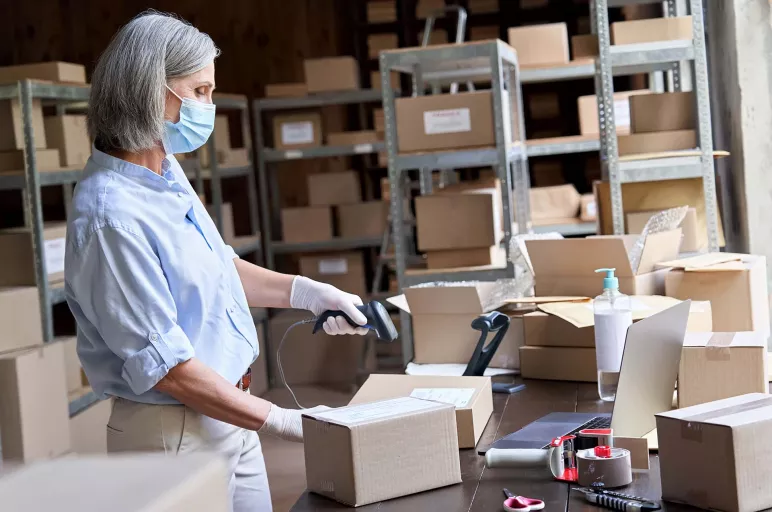
Procurement is Turning Autonomous. Here’s How
- Businesses have accelerated digital transformation and automation amidst growing uncertainty.
- Autonomous procurement is a data-driven model that leverages technology to reduce human intervention as well as streamline decision-making.
- Experts believe autonomous procurement can simplify the buying process and allow the workforce to focus on more strategic tasks and manage risk.
May 13, 2022 | Procurement Software
The pandemic and other unprecedented events of recent times have compelled businesses to future-proof their supply chains and look for ways to counter supply disruptions. In this endeavor, they look to deploy advanced technology and redefine the roles of supply chain and procurement professionals.
The evolution of procurement is not sudden but has been accelerated by recent events. In fact, procurement solutions have evolved through multiple generations.
Talking about this evolution, Saratendu Sethi, vice president at GEP says, “Procurement has now evolved into data-driven decisioning. Based on past actions and experiences, we can deploy artificial intelligence and machine learning to provide insights and make recommendations on the next best action based on the current situation.”
However, before procurement can become autonomous, it is likely to go through an interim stage that can be called augmented procurement, where the human workforce gets assistance from technology and gains trust on the algorithms and systems.
Technology can not only automate routine tasks and enable the workforce to focus on more strategic tasks, it can also provide useful insights for decision-making. Once the workforce gets familiar with these benefits of technology, it can then move toward autonomous solutions.
Users Can Learn from Past Experiences
Clearly, data is now the lifeline of procurement. The autonomous model works both with historical data that is derived through past experiences and actions as well as real-time data that is in sync with market changes and obtained via digital tools.
The deployment of technology is set to change the way procurement currently operates.
According to Michele Myers, vice president-product management at GEP, autonomous procurement allows the user to have the system recommend and suggest actions, details and opportunities. It gives the user the ability to learn from past experiences through data and to leverage available opportunities and become more efficient.
Benefits of Autonomous Procurement
One of the key objectives of autonomous procurement is to proactively track market developments and leverage that information to make informed decisions.
For example, if the prices of specific commodities are going up or down in the direct procurement space, autonomous procurement can provide this information to the user and trigger an appropriate action. It will alert the user to these market changes and create procurement activities that can either be automated or set for the user’s review.
Here is how the transition to autonomous can make life easy for procurement professionals:
- Simplifies supplier selection and setup
A key focus of autonomous procurement is to make sure you have the right suppliers that you are doing business with. It streamlines supplier selection by automating this process or making recommendations based on past performance or business network. The autonomous solution simplifies the selection process by helping design the setup of the artifacts.
- Reduces complexity
Autonomous procurement can help break down the complexity in a global business environment. Traditionally, procurement professionals had to deal with local challenges. Today, however, they are dealing with global organizations and there are a lot more regional aspects that come into play. The expectation from autonomous sourcing is that it should provide accurate regional insights to make the right sourcing decision.
- Brings workforce up to speed
Autonomous procurement simplifies the adoption and use of technology. It provides the ability to bring consistency across a diverse workforce that is today working remotely. Autonomous processes help the workforce adapt to technology and make the right use of systems. The workforce can use the software and tools with minimal training.
- Enhances buying experience
Autonomous procurement is likely to simplify the overall buying experience. The entire purchase experience will change with users purchasing commodities via their mobile phones and using advanced tools such as chatbots and speech to text.
Can autonomous procurement become a reality soon?
Despite its several advantages, autonomous procurement has few takers today. While some businesses feel it can take away their jobs, others are not sure if technology can provide the desired results. They doubt the accuracy of the technology and are reluctant to deploy it immediately. Therefore, while the concept of autonomous procurement may have got many procurement leaders excited, it is not likely to be adopted immediately.
But, as recent events and supply disruptions have shown, market dynamics can change very quickly, and businesses can adopt procurement technology much earlier than anticipated.
Given the pace at which digital solutions are currently evolving, it may not be long before autonomous procurement becomes a vital necessity.
In fact, we may see businesses adopting autonomous procurement within the next five years, Sethi concludes.




